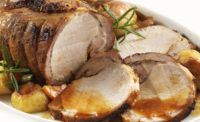The adoption of multichannel e-commerce platforms, as well as advancements in technology continue to challenge brands into reconsideringhow they interact with consumers, both online and in store. Grocery is an industry that has the ability to interact with a huge portion of the population, providing a unique opportunity to create personalized experiences for a broad and diverse range of demographic profiles.
It’s no secret that consumers are rapidly growing more comfortable with incorporating mobile devices into their shopping experience, yet few grocers and food brands have capitalized on available mobile technologies to connect with their shoppers and convert them into more frequent buyers.In fact, according to a studyconducted by Food Marketing Institute, Arlington, Va., nearly one-third of shoppers search for online coupons and use their smartphones for tasks such as creating shopping lists, finding recipes and researching products while in store.
Over the next year, mobile is expected to transform customer engagement. So,how can grocers use this to their advantage to increase basket size and instill brand loyalty? Below are some compelling mobile engagement strategies that could be used:
SMS Marketing allows grocers to reach consumers without requiring them to download an app. Through these easy-to-adopt methods, store visitors can text and receive a link to a specific microsite that offers information and deals that are geographically and situationally relevant to the shopper on certain products, such as frozen individual and family dinners.
Branded apps or universal apps provide consumers with a single mobile-centric source ofinformation from either a specific retailer or a group of participating retailers. Through an app, shoppers can utilize features like price comparisons on milk and other dairy products, as well as create grocery shopping lists and enable beacon activation.
Beacons are portable devices that can be placed anywhere in a store that leverages a user’s smartphone Bluetooth connection to transmit information directly to a mobile app listening for its signal. A great use of this could be in the freezer aisles to alert customers of coupons for ice cream brands and flavors that have holiday discounts.
Near field communications (NFC) is a short-range, wireless technology that capitalizes on electromagnetic radio fields to provide interaction between retailers and consumers via enabled tag stickers. The tags can be easily integrated into promotional marketing collateral, such as posters, displays and product packaging, providing a variety ofinformation, such as nutritional facts and organic standards for grass-fed beef.
Almost as important as the campaign itself is awareness. Point-of-purchase displays and signage are necessary to bring awareness to mobile shopper engagement programs throughout a store location. These programs should also incorporate seasonal offerings such as specials for the holidaysor watermelon in the summer. These kinds of strategies not only create an emotional connection with shoppers, but they alsodrive impulse decisions to increase basket size.
In addition to implementing a mobile engagement strategy, it is important that grocers and food brands collect and analyze the data that can be provided via their mobile engagement tools. This will allow them to better personalize each customer’s shopping experience and guide emotional responses. There's a point at which a customer's positive or negative experience with a grocer or food brand is so strong that it can transcend the rational aspects of a brand such as quality, price and service.
Today, brands and retailers have greater opportunities to listen, understand and react to customer feedback through the mobile channel. These devices are rapidly transforming the retail landscape and blurring the lines between online and in-store customer experience—offering a great opportunity for grocers to incentivize in-store purchases and improve sales.



